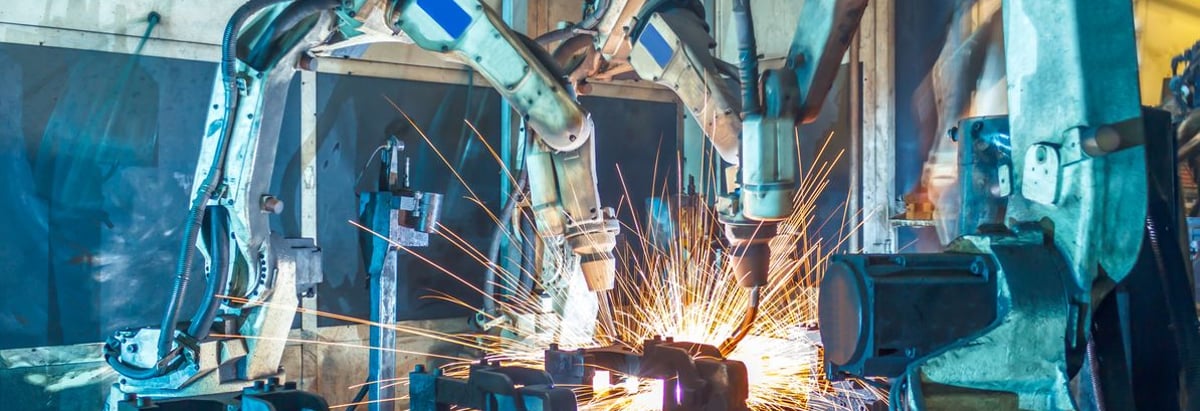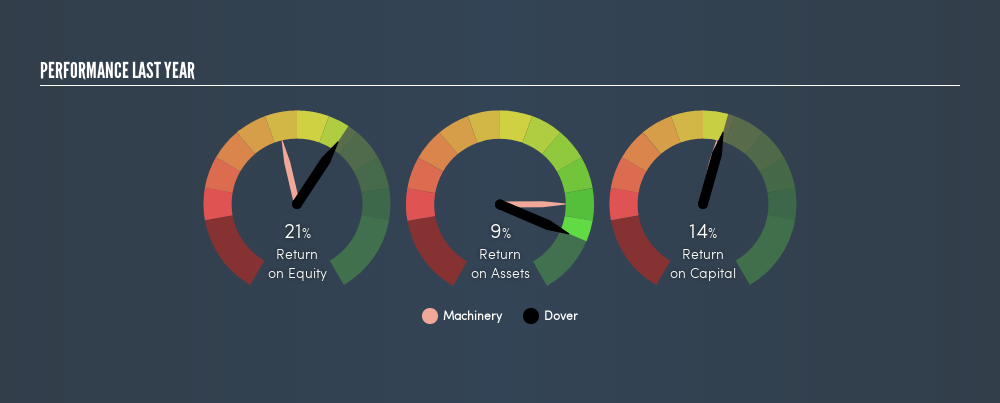
Today we are going to look at Dover Corporation (NYSE:DOV) to see whether it might be an attractive investment prospect. Specifically, we'll consider its Return On Capital Employed (ROCE), since that will give us an insight into how efficiently the business can generate profits from the capital it requires.
First up, we'll look at what ROCE is and how we calculate it. Then we'll compare its ROCE to similar companies. And finally, we'll look at how its current liabilities are impacting its ROCE.
Return On Capital Employed (ROCE): What is it?
ROCE is a measure of a company's yearly pre-tax profit (its return), relative to the capital employed in the business. All else being equal, a better business will have a higher ROCE. Ultimately, it is a useful but imperfect metric. Author Edwin Whiting says to be careful when comparing the ROCE of different businesses, since 'No two businesses are exactly alike.'
So, How Do We Calculate ROCE?
Analysts use this formula to calculate return on capital employed:
Return on Capital Employed = Earnings Before Interest and Tax (EBIT) ÷ (Total Assets - Current Liabilities)
Or for Dover:
0.14 = US$907m ÷ (US$8.4b - US$1.8b) (Based on the trailing twelve months to December 2018.)
So, Dover has an ROCE of 14%.
See our latest analysis for Dover
Does Dover Have A Good ROCE?
When making comparisons between similar businesses, investors may find ROCE useful. Using our data, we find that Dover's ROCE is meaningfully better than the 11% average in the Machinery industry. We consider this a positive sign, because it suggests it uses capital more efficiently than similar companies. Regardless of where Dover sits next to its industry, its ROCE in absolute terms appears satisfactory, and this company could be worth a closer look.

When considering ROCE, bear in mind that it reflects the past and does not necessarily predict the future. ROCE can be deceptive for cyclical businesses, as returns can look incredible in boom times, and terribly low in downturns. This is because ROCE only looks at one year, instead of considering returns across a whole cycle. Since the future is so important for investors, you should check out our freereport on analyst forecasts for Dover.
Dover's Current Liabilities And Their Impact On Its ROCE
Liabilities, such as supplier bills and bank overdrafts, are referred to as current liabilities if they need to be paid within 12 months. Due to the way ROCE is calculated, a high level of current liabilities makes a company look as though it has less capital employed, and thus can (sometimes unfairly) boost the ROCE. To counteract this, we check if a company has high current liabilities, relative to its total assets.
Dover has total liabilities of US$1.8b and total assets of US$8.4b. Therefore its current liabilities are equivalent to approximately 22% of its total assets. Current liabilities are minimal, limiting the impact on ROCE.
Our Take On Dover's ROCE
With that in mind, Dover's ROCE appears pretty good. Dover looks strong on this analysis, but there are plenty of other companies that could be a good opportunity . Here is a free list of companies growing earnings rapidly.
If you like to buy stocks alongside management, then you might just love this freelist of companies. (Hint: insiders have been buying them).
We aim to bring you long-term focused research analysis driven by fundamental data. Note that our analysis may not factor in the latest price-sensitive company announcements or qualitative material.
If you spot an error that warrants correction, please contact the editor at editorial-team@simplywallst.com. This article by Simply Wall St is general in nature. It does not constitute a recommendation to buy or sell any stock, and does not take account of your objectives, or your financial situation. Simply Wall St has no position in the stocks mentioned. Thank you for reading.
About NYSE:DOV
Dover
Provides equipment and components, consumable supplies, aftermarket parts, software and digital solutions, and support services worldwide.
Flawless balance sheet average dividend payer.
Similar Companies
Market Insights
Community Narratives





